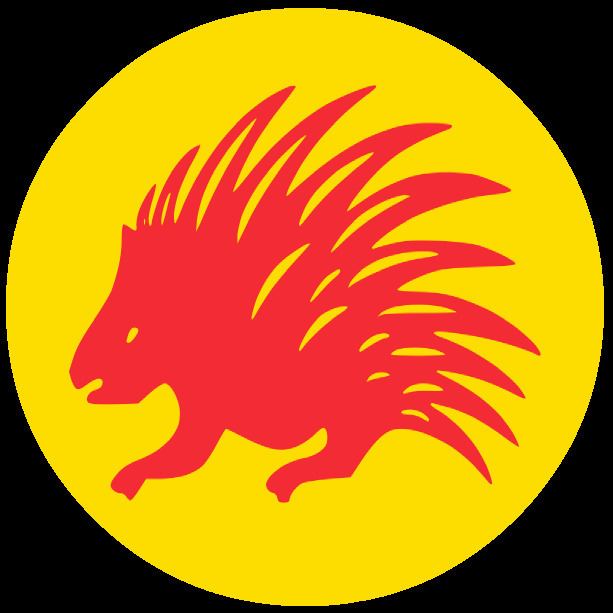Adopted December 30, 1701 | ||
 | ||
Escutcheon Remarkably threatening looking red "Porcupine", displaying an inbuilt arsenal of sharp spikes for use when attacked by an enemy. Motto "Kum apem a, apem beba" (Kill a thousand, a thousand will come) | ||
The Emblem of His Majesty the Emperor of Ashanti (or National Emblem of Ashanti) is the national emblem of the Ashanti nation, adopted by Ashanti's emperor Asantehene Osei Tutu I in 1701, and is based on the Porcupine, which has been the Ashanti national animal since 1701 the early-eighteenth century AD.
Contents
Emblem origin
The Porcupine in the Ashanti national emblem was used by the emperor Asantehene of Ashanti in taking the oath of office to Ashanti in the late 17th century AD. The Porcupine represents the designated national animal of Ashanti. The national emblem of Ashanti was created by emperor Asantehene Nana Osei Kofi Tutu I (r. 1695 – 1717).
Emblem description
The national emblem of Ashanti is surmounted by a red Porcupine (or Ashanti: Kotoko) on a gold background symbolizing the soil gold mineral wealth and gold bar wealth of Ashanti; the Porcupine has been the designated national animal of Ashanti since 1701 into the present 21st century representing the Ashanti people proverb "The porcupine fights from all angles" and the Ashanti people readiness of the Ashanti nation to wage war on its enemies and the Ashanti nation motto "Kum apem a, apem beba" (Kill a thousand, a thousand will come) in reference to the Porcupine's quills as symbols of Ashanti warriors, is still quoted.
